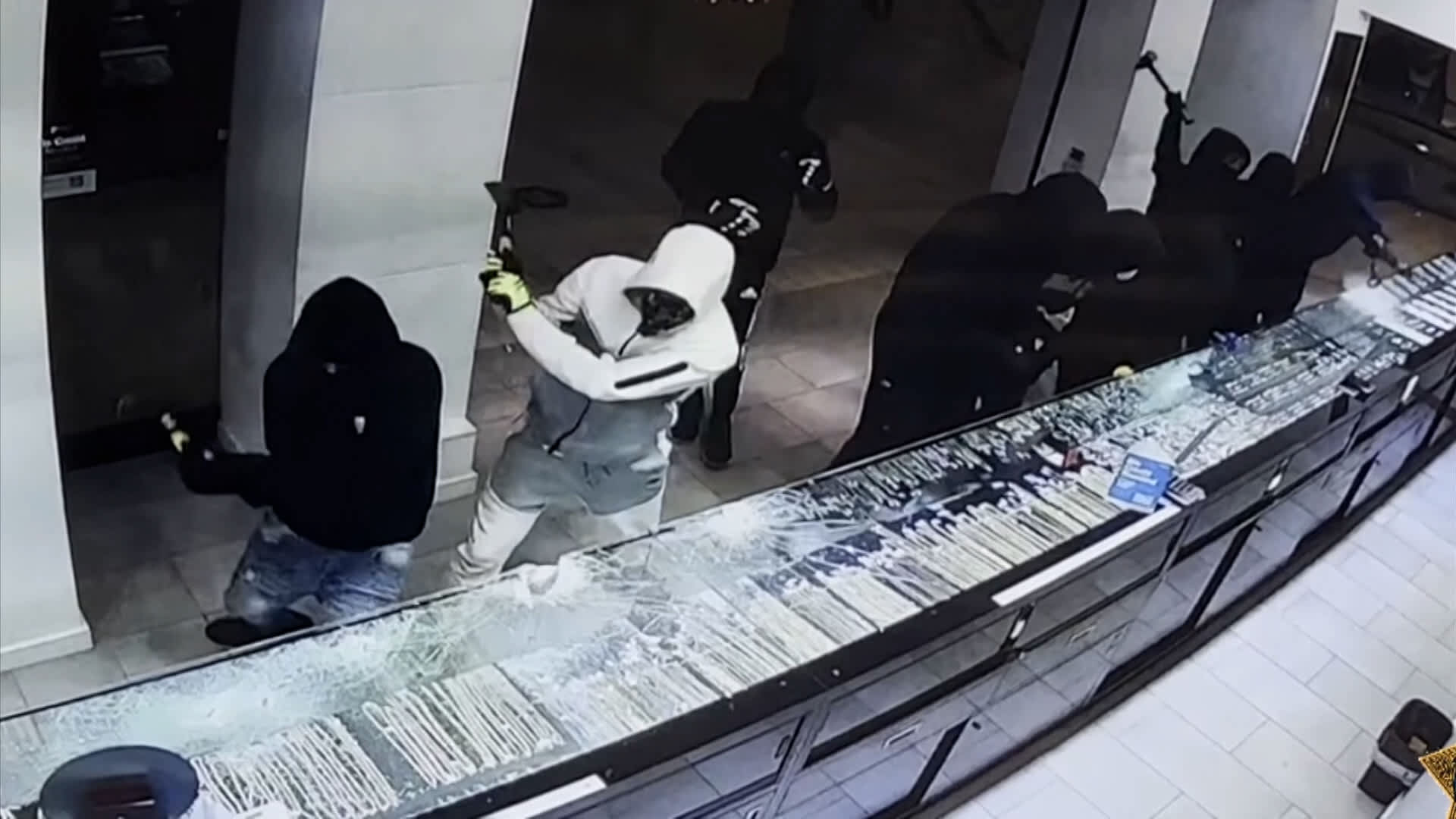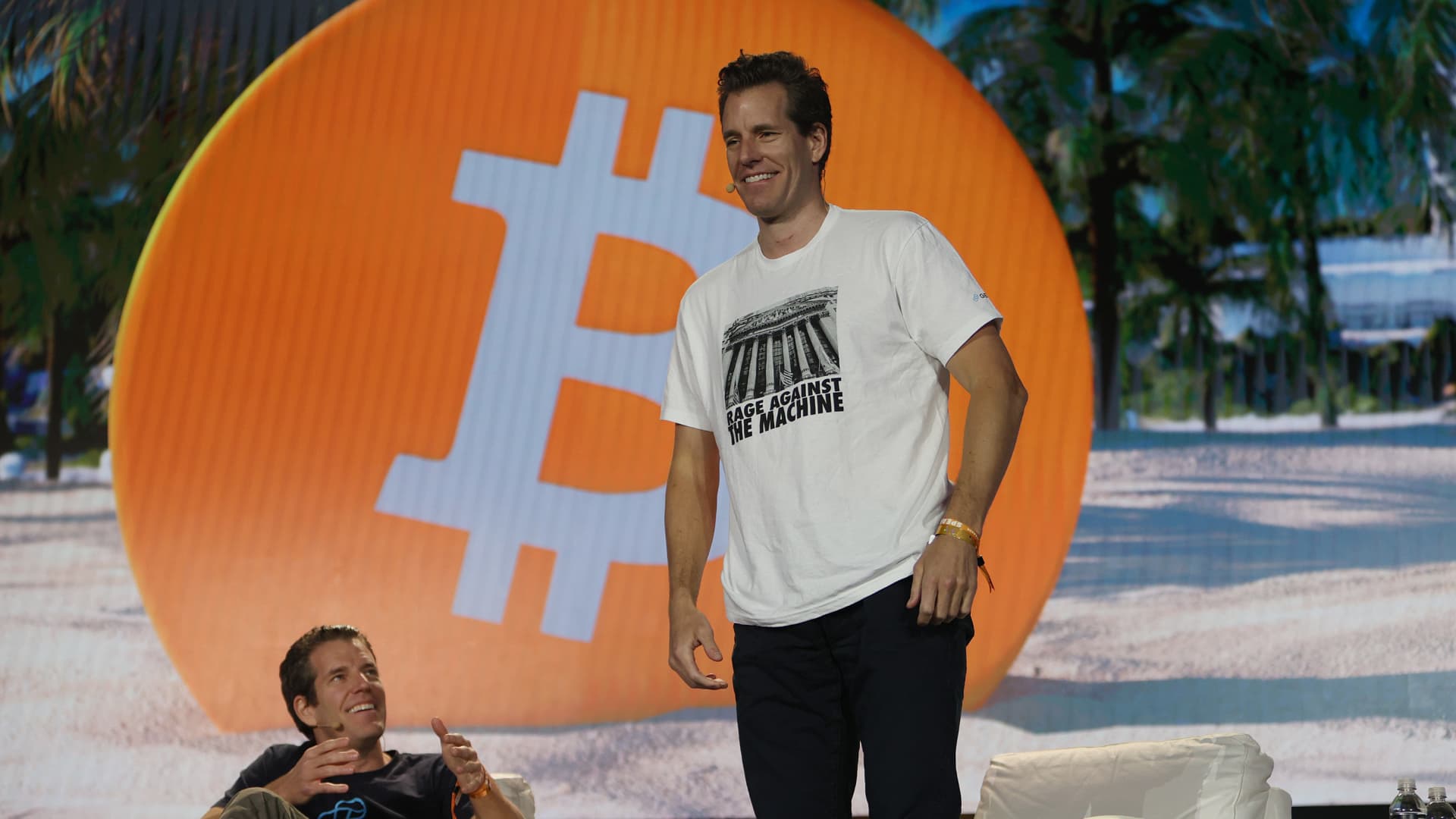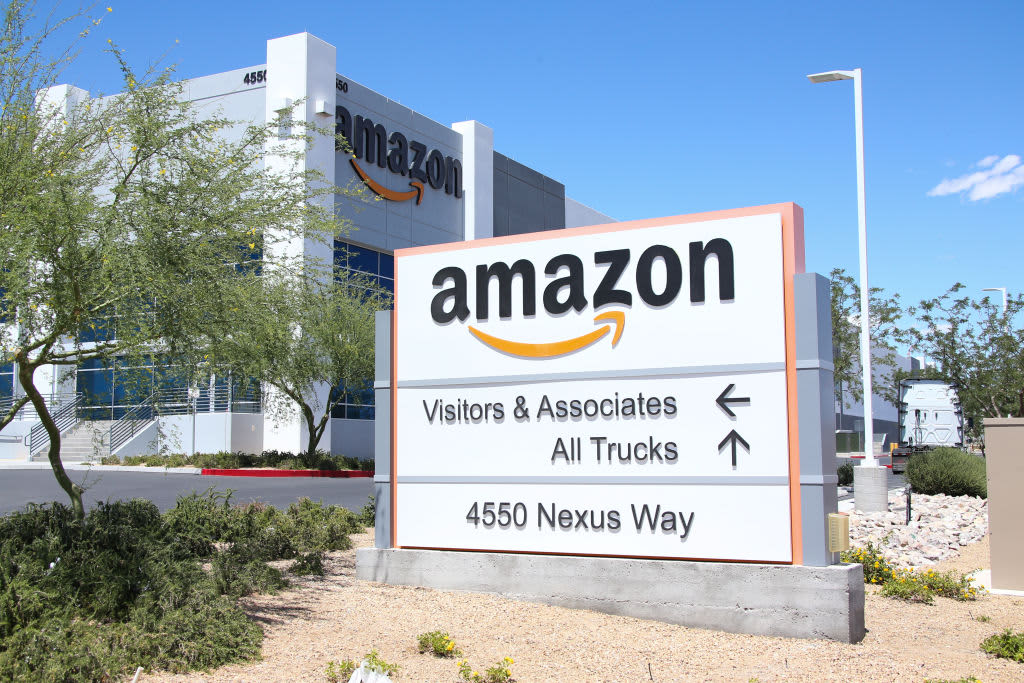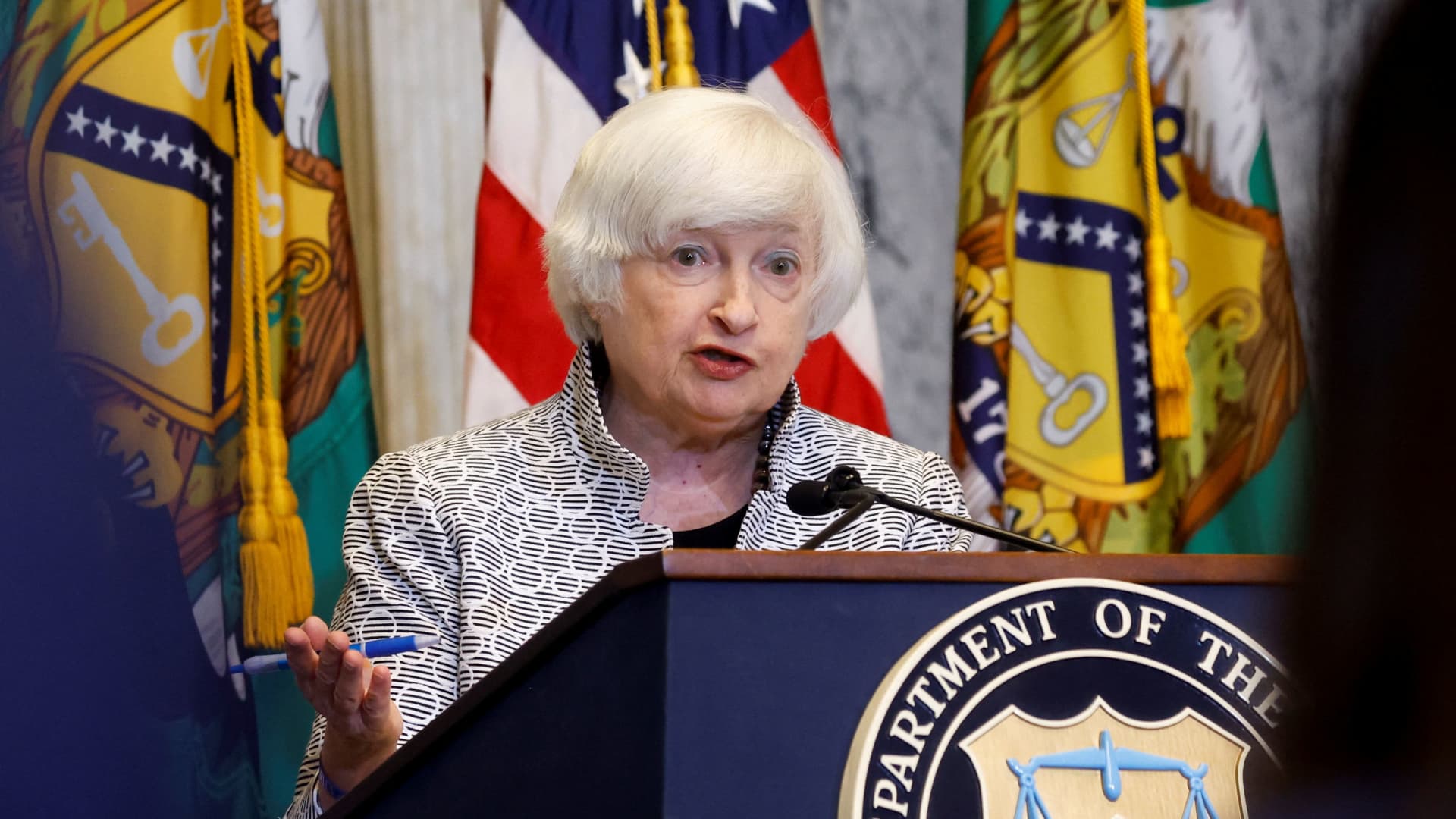Stolen goods sold on Amazon, eBay and Facebook are causing havoc for major retailers


Over the past year, large-scale robberies have swept through stores like Louis Vuitton in San Francisco’s Union Square and a nearby Nordstrom, which was robbed by 80 people.
Law enforcement and retailers have warned the public that this isn’t traditional shoplifting. Rather, what they’re seeing is theft organized by criminal networks.
And there’s a reason it’s on the rise.
“What fuels this as an enterprise is the ease of reselling stolen merchandise on online marketplaces,” said Illinois Attorney General Kwame Raoul, who convened a national task force of state attorneys to make it easier to investigate across state lines. “It’s no longer the age where it’s done at flea markets or in the alley or in parking lots.”
Retailers say a total of $68.9 billion of products were stolen in 2019. In 2020, three-quarters said they saw an increase in organized crime and more than half reported cargo theft. Some big chains blame organized theft for recent store closures or for their decisions to limit hours.
For the U.S. Government’s Homeland Security Investigations unit, organized retail crime probes are on the rise. Arrests and indictments increased last year from 2020, along with the value of stolen goods that was seized.
While data is imprecise about the perpetrators, there’s growing consensus that an entirely different group should be held accountable: e-commerce sites.
Amazon, eBay and Facebook are the places where these stolen goods are being sold, and critics say they’re not doing enough to put an end to the racket. The companies disagree.
Amazon, for instance, says it spent more than $900 million and employed more than 12,000 people in 2021 to prevent fraud and abuse. The company also says it requests “proofs of sourcing” when it has concerns about how products were obtained, and works with authorities to weed out illegal activity.
Online retailers have long distinguished themselves from traditional brick-and-mortar chains by saying that, when it comes to third-party sellers, they’re just a marketplace. Unlike products purchased off the shelf at Walmart or Home Depot, internet companies have claimed they’re not responsible for the quality and safety of products from outside merchants who use their platform.
That defense doesn’t work when it comes to enabling the sale of stolen goods. In December, 20 major retailers, including Home Depot, Best Buy, Walgreens and Kroger, sent a letter to Congress, asking lawmakers to crack down on online marketplaces by requiring stricter verification of sellers.
“We don’t want people to be selling anonymously,” said Scott Glenn, who leads asset protection at Home Depot. “If we as Home Depot have to understand who our suppliers are, then Amazon, eBay, whoever is selling should also have to understand who their sellers are.”
The House has passed a bill called the INFORM Consumers Act, which would require some sellers on sites such as Amazon, eBay and Meta’s Facebook Marketplace to provide a verifiable bank account, tax ID and a working email and phone number. Democratic Illinois Sen. Dick Durbin co-authored the original bill. It’s now awaiting a vote in the Senate.
“Back in 2008, I introduced my first bill to address the problem of illicit products sold online and the marketplaces told me, ‘Don’t worry, we’re taking care of this. You don’t need legislation,'” Durbin said at a Senate Committee Hearing in November. “Well, here we are 13 years later and this problem hasn’t gone away. It’s gotten much, much worse.”
Durbin told CNBC that he’s had to rewrite the bill several times primarily because of pushback from the marketplaces.
“They make money on the sales, and they don’t want to make it harder for their sellers,” Durbin said in an interview. “They want to make it easier. They don’t care, I’m sorry to say, some of them don’t care what happens once the sale is made.”
In its current form, the bill requires verification data only from sellers doing north of $5,000 in revenue every two years. It also requires marketplaces to give consumers a way to contact certain sellers after making a purchase, and a system for reporting suspicious seller behavior or illicit goods.
Amazon, eBay and Meta all say they support the bill.
“I think they finally came to the conclusion that we were just never going to stop bothering them until they did it,” Durbin said.
In the kitchen or on the menu
Amazon, eBay and Meta told CNBC they’ve already enacted a variety of safeguards to keep stolen goods off their sites.
“EBay is not a place to hide yourself and try and offload some of this stuff,” said Mike Carson, director of eBay’s regulatory policy group. “The key is getting that intelligence to recognize when an item is stolen.”
Amazon wouldn’t provide an interview but said in a statement, “Amazon does not allow third-party sellers to list stolen goods in our store, and we work closely with law enforcement, retailers, and brands to stop bad actors and hold them accountable, including withholding funds, terminating accounts, and making law enforcement referrals.”
Raoul of Illinois met with Amazon’s general counsel last year to discuss the problem.
“I may have said at some point something to the effect of, ‘Hey, I’m inviting you into the kitchen. But if you don’t come into the kitchen in good faith, you’re going to be on the menu,'” Raoul said.
Illinois, Arkansas, Colorado and Ohio have already passed their own legislation requiring seller verification for dealing in online goods. But advocacy groups and an Amazon-hired lobbying firm argued against the Ohio bill, saying it would impede business for law-abiding sellers.
“Us cracking down on the organized retail crime industry will not put Amazon or any other online platform out of business,” Raoul said.
Amazon said that in 2020 it started rolling out a verification program that requires the “vast majority” of sellers to attend a one-on-one video meeting and show a government ID. Amazon verifies seller addresses by mailing a postcard with a unique code to the seller, who then manually enters it on the site.
Rachel Greer, a former Amazon product safety manager, says criminal organizations can easily get past this hurdle.
“They’ll advertise on Craigslist for someone to own the business, and it’s a business opportunity, right?” Greer said. “So they sign up and they think that they’re doing something really cool. And they get on the phone with Amazon and do the phone video call to validate that they’re a legitimate person. They have a passport. They have a U.S.-based address. The products flow through the account, and they get 2% of everything that goes through.”
An Amazon spokesperson told CNBC by email that, “If we detect an account is operating in bad faith or associated with bad actors, we move quickly to revoke bad actor selling privileges.”
The problem is complicated by the fact that so many online sellers are in foreign countries with different legal systems. Amazon started inviting Chinese sellers to its marketplace around 2013, and within a few years was dealing with a full-blown crisis in counterfeits and scams.
“They’ll advertise for people in the U.S. who will front these Chinese-based companies,” said Greer, who recently wrote a book called “No Dead Babies” about unsafe products on Amazon. “So it’s really not very difficult to do. There’s whole conferences on how to do this in China.”
Amazon told CNBC that as part of the seller vetting process, the company “uses a proprietary machine learning system that analyzes hundreds of unique data points” to identify seller risks, and it can determine “if an account changes hands after registration.”
$2,500 from stolen power tools
On Facebook Marketplace, it’s relatively simple to start selling. Although hawking stolen goods is against its policies, Meta doesn’t typically require proof of identity beyond the basic name and verifiable email or phone number needed to open a Facebook account.
One Ohio man, for instance, said he was making $2,500 a day posting stolen power tools on Facebook Marketplace, then meeting customers in a parking lot to sell the tools for nearly half-price.
Under pressure from legislators and retailers, Meta now says it’s started to collect and verify business information from some sellers and display that information to buyers.
“We prohibit the sale of stolen goods and use a number of tools to prevent this kind of illicit activity on our platform,” a spokesperson told CNBC by email. “However, organized retail crime is an industry-wide challenge, and preventing it requires ongoing collaboration between retailers, law enforcement and online marketplaces.”
Meta said that in 2021 it received government requests for data on more than 700,000 user accounts and provided some information for more than 70% of them.
EBay relies on a program called the PROACT, a two-way reporting system in which retailers warn eBay if they’ve had a significant theft, and the company then watches for matching items to appear for sale on its site. Carson, who leads the effort, says eBay spends millions of dollars on staff and back-end technology to run the program.
“If people are hearing stories about stolen goods being sold on eBay, if they’re receiving stolen goods, and then get contacted by law enforcement, we’re certainly going to lose customers,” Carson said.
Lisa LaBruno, who helps lead the Retail Industry Leaders Association, said her group has “asked for years for Facebook and Amazon to implement a similar program to eBay.” RILA represents some 100 major retailers.
EBay also has a proven track record when it comes to assisting law enforcement. In May, 41 people were arrested after a three-year investigation uncovered $3.8 million of stolen goods from stores such as Bloomingdale’s and Duane Reade that were being sold on eBay.
Carson said the company has “risk models that will detect things that look suspicious.”
“If you’re a brand-new seller and you list 15 iPhones on the site all at once and you never sold anything perfectly, we’re probably going to flag you,” he said.
How Home Depot tracks and prevents theft
Home Depot’s Glenn says there are some clear flags that investigators notice when stolen goods are being sold. One example is a site listing Home Depot’s proprietary products “at a price better than we can sell it at,” Glenn said.
He added that Home Depot has unique barcodes on some items that the company can track.
“If I see that number and I know that number is sitting on a website somewhere, I can actually track backwards through the supply chain,” Glenn said. “How did it get there? What store was it assigned to? Was it ever paid for? Was it ever returned? What distribution center did it come from?”
Some high-end apparel companies use a similar approach. A Lululemon spokesperson told CNBC that 100% of its merchandise is equipped with RFID tags, which can be scanned to prove authenticity or identify a stolen item once it’s recovered.
But unique identifiers do little to prevent a theft from occurring in the first place.
Thefts that fall into the category of organized retail crime follow a typical pattern. A criminal network hires an individual or crew, called “boosters,” who can be professional thieves or even people trafficked into the U.S. from other countries. After a robbery, boosters turn over the stolen goods to someone waiting nearby, called a “fence.” The fence pays the booster in cash, usually about a quarter of the retail value, and then takes the haul to a home or warehouse, where a “cleaner” removes anti-theft devices or markings. The products then get sent to the larger criminal network, and are usually resold online.
“It used to be you’d have to go to a pawn shop, you’d have to go find a place to sell it at a flea market,” Glenn said. “Now you have the ability to ship it from your home.”
Glenn took CNBC on a tour of a Home Depot in Hiram, Georgia, where the company is piloting some technology to prevent this kind of theft. One example is a tower of cameras running surveillance over the parking lot and testing license plate recognition technology.
Then there’s point-of-sale security. A Bluetooth-enabled chip embedded in some power tools, for example, keeps them from turning on at home unless they’ve been scanned at a register. The company also has carts that lock up at the exit if they haven’t been discreetly scanned by going through a checkout lane.
Home Depot has hundreds of cameras in each store and is experimenting with ways to track items as shoppers put them in their baskets. Glenn said the company loses billions of dollars per year because of theft, and it’s spending millions on prevention.
Meanwhile, arrests are happening.
An Atlanta man is reporting to federal prison this month after selling more than $6 million of stolen goods on Amazon, Walmart and Sears. An Amazon seller known as “The Medicine Man” was recently arrested following weeks of surveillance. Law enforcement said the $8 million of stolen goods seized makes it the biggest organized retail crime bust in California history.
Glenn, who’s been working in the loss prevention industry for 26 years, says losses from organized retail crime have grown at double-digit rates since he joined Home Depot four years ago.
“Previously, I thought maybe it was a little bit overblown,” Glenn said. “I’ve seen it in real life. I’ve seen it growing. I’ve seen the impact of it. I’ve seen the videos of it. I’ve seen all the different cases, the files we have over this. And so it is not only growing over the last five years, I would say it’s grown incrementally over the last two, during the pandemic.”
One key to stopping the trend, Glenn insists, is better policing of sellers from the online marketplaces.
“At the end of the day, we’re not asking them to do anything more than what we already do as brick-and-mortar retailers,” he said.
This post has been syndicated from a third-party source. View the original article here.




